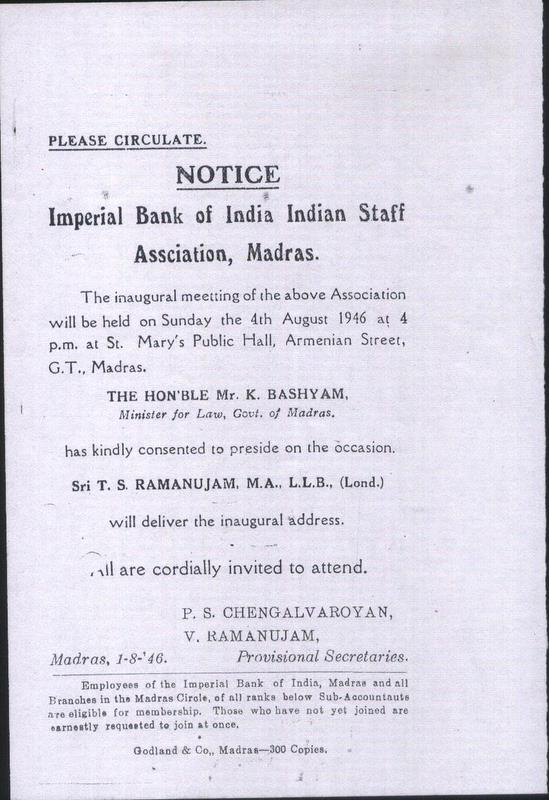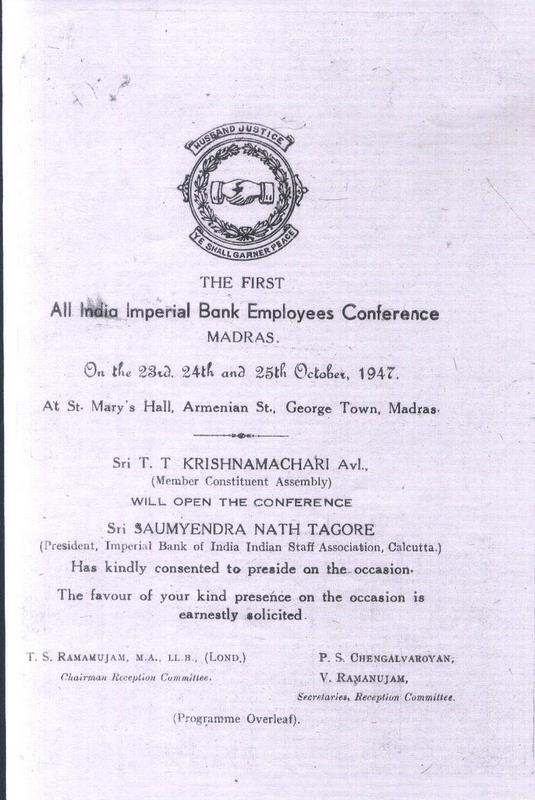When the evil designs of the outside leadership of the union came to surface
during and after the heroic strike in 1960, Shri T.V.Loganathan mobilized
the rank and file for ousting the outside leadership, who were aiming to
shatter the solidarity of the Federation which was built brick by brick, by
sweat and blood and by toil and moil of innumerable employees of the bank
all over the Country. Such a movement gained momentum and the entire rank
and file rose in revolt against the then leadership at the General Council
meeting held at Tiruchirapalli on 14th and 15th October 1961. Under the
guidance of Shri M.V.Alexander (former Senior Vice President) a team of
dedicated workers – Viz. Sarvashri R.N.Godbole, S.P.Thyagarajan, P.V.H.Babu,
N.Balasubramanian (Trichy), P.N.Krishnamurthy, V.Ganesan, S.P.Raman,
C.Damodaran and few others mobilized the members of the General Council for
support to oust the political leadership. By the democratic process the then
leadership was thrown out of power lock, stock and barrel. Shri
C.L.Rajaratnam was elected as the first employee President of the Circle
Union and subsequently Staff Federation.
The swift measures initiated by the new Central Committee after eschewing
the political forces from the Union in 1961 under the stewardship of
Sarvashri T.V.Loganathan, V.Ganesan and C.L.Rajaratnam to tone up the
administration of the Union, right from collection of subscriptions to
strengthening the units at various branches in the Circle (then comprising
of the entire Tamilnadu, Kerala, Karnataka, part of Andhra State and Union
Territory of Pondicherry Branches), resulted in the building up of a close
knit and a strong Circle Union viz. State Banks' Staff Union (MC).
Born as a small organization in 1947 covering hardly about 1000 employees,
the All India State Bank of India Staff Federation has today grown into a
powerful edifice branching out to more than 8000 Centres all over the
Country and commanding a membership of over 1.30 lakhs.













